CHEMICAL IDENTIFICATION
-
RTECS NUMBER :
-
UX9660500
-
CHEMICAL NAME :
-
1-Pyrrolidineacetamide, 2-oxo-
-
CAS REGISTRY NUMBER :
-
7491-74-9
-
BEILSTEIN REFERENCE NO. :
-
1526393
-
LAST UPDATED :
-
199612
-
DATA ITEMS CITED :
-
10
-
MOLECULAR FORMULA :
-
C6-H10-N2-O2
-
MOLECULAR WEIGHT :
-
142.18
-
WISWESSER LINE NOTATION :
-
T5NVTJ A1VZ
HEALTH HAZARD DATA
ACUTE TOXICITY DATA
-
TYPE OF TEST :
-
LDLo - Lowest published lethal dose
-
ROUTE OF EXPOSURE :
-
Oral
-
SPECIES OBSERVED :
-
Rodent - rat
-
DOSE/DURATION :
-
5600 mg/kg
-
TOXIC EFFECTS :
-
Details of toxic effects not reported other than lethal dose value
-
REFERENCE :
-
FRPPAO Farmaco, Edizione Pratica. (Casella Postale 227, 27100 Pavia, Italy) V.8-43 1953-88 For publisher information, see FRMCE8 Volume(issue)/page/year: 32,47,1977
-
TYPE OF TEST :
-
LD50 - Lethal dose, 50 percent kill
-
ROUTE OF EXPOSURE :
-
Oral
-
SPECIES OBSERVED :
-
Rodent - mouse
-
DOSE/DURATION :
-
2 gm/kg
-
TOXIC EFFECTS :
-
Details of toxic effects not reported other than lethal dose value
-
REFERENCE :
-
KHFZAN Khimiko-Farmatsevticheskii Zhurnal. Chemical Pharmaceutical Journal. For English translation, see PCJOAU. (V/O Mezhdunarodnaya Kniga, 113095 Moscow, USSR) V.1- 1967- Volume(issue)/page/year: 24(4),32,1990
-
TYPE OF TEST :
-
LD50 - Lethal dose, 50 percent kill
-
ROUTE OF EXPOSURE :
-
Intraperitoneal
-
SPECIES OBSERVED :
-
Rodent - mouse
-
DOSE/DURATION :
-
>10 gm/kg
-
TOXIC EFFECTS :
-
Details of toxic effects not reported other than lethal dose value
-
REFERENCE :
-
PCJOAU Pharmaceutical Chemistry Journal (English Translation). Translation of KHFZAN. (Plenum Pub. Corp., 233 Spring St., New York, NY 10013) No.1- 1967- Volume(issue)/page/year: 23,795,1989
-
TYPE OF TEST :
-
LD50 - Lethal dose, 50 percent kill
-
ROUTE OF EXPOSURE :
-
Subcutaneous
-
SPECIES OBSERVED :
-
Rodent - mouse
-
DOSE/DURATION :
-
>12 gm/kg
-
TOXIC EFFECTS :
-
Details of toxic effects not reported other than lethal dose value
-
REFERENCE :
-
KHFZAN Khimiko-Farmatsevticheskii Zhurnal. Chemical Pharmaceutical Journal. For English translation, see PCJOAU. (V/O Mezhdunarodnaya Kniga, 113095 Moscow, USSR) V.1- 1967- Volume(issue)/page/year: 11(8),132,1977
-
TYPE OF TEST :
-
LD50 - Lethal dose, 50 percent kill
-
ROUTE OF EXPOSURE :
-
Intravenous
-
SPECIES OBSERVED :
-
Rodent - mouse
-
DOSE/DURATION :
-
9200 mg/kg
-
TOXIC EFFECTS :
-
Details of toxic effects not reported other than lethal dose value
-
REFERENCE :
-
YHTPAD Yaoxue Tongbao. Bulletin of Pharmacology. (China International Book Trading Corp., POB 2820, Beijing, Peop. Rep. China) V.13-23, 1978-88. For publisher information, see ZYZAEU. Volume(issue)/page/year: 18,465,1983
-
TYPE OF TEST :
-
LD50 - Lethal dose, 50 percent kill
-
ROUTE OF EXPOSURE :
-
Intravenous
-
SPECIES OBSERVED :
-
Mammal - cat
-
DOSE/DURATION :
-
10 gm/kg
-
TOXIC EFFECTS :
-
Details of toxic effects not reported other than lethal dose value
-
REFERENCE :
-
RPTOAN Russian Pharmacology and Toxicology (English Translation). Translation of FATOAO. (Euromed Pub., 33, Woodlands Rd., Surbiton, Surrey, UK) V.30- 1967- Volume(issue)/page/year: 47,205,1984
-
TYPE OF TEST :
-
LD50 - Lethal dose, 50 percent kill
-
ROUTE OF EXPOSURE :
-
Unreported
-
SPECIES OBSERVED :
-
Mammal - species unspecified
-
DOSE/DURATION :
-
>10 gm/kg
-
TOXIC EFFECTS :
-
Details of toxic effects not reported other than lethal dose value
-
REFERENCE :
-
RPTOAN Russian Pharmacology and Toxicology (English Translation). Translation of FATOAO. (Euromed Pub., 33, Woodlands Rd., Surbiton, Surrey, UK) V.30- 1967- Volume(issue)/page/year: 44,22,1981 ** OTHER MULTIPLE DOSE TOXICITY DATA **
-
TYPE OF TEST :
-
TDLo - Lowest published toxic dose
-
ROUTE OF EXPOSURE :
-
Intraperitoneal
-
SPECIES OBSERVED :
-
Rodent - rat
-
DOSE/DURATION :
-
70 gm/kg/14D-I
-
TOXIC EFFECTS :
-
Behavioral - somnolence (general depressed activity) Endocrine - adrenal cortex tumors Biochemical - Neurotransmitters or modulators (putative) - dopamine in striatum
-
REFERENCE :
-
PJPPAA Polish Journal of Pharmacology and Pharmacy. (ARS Polona, POB 1001, 00-068 Warsaw 1, Poland) V.25- 1973- Volume(issue)/page/year: 43,7,1991
-
TYPE OF TEST :
-
TDLo - Lowest published toxic dose
-
ROUTE OF EXPOSURE :
-
Oral
-
SPECIES OBSERVED :
-
Mammal - dog
-
DOSE/DURATION :
-
182 gm/kg/13W-I
-
TOXIC EFFECTS :
-
Gastrointestinal - hypermotility, diarrhea Gastrointestinal - nausea or vomiting
-
REFERENCE :
-
YACHDS Yakuri to Chiryo. Pharmacology and Therapeutics. (Raifu Saiensu Shuppan K.K., 2-5-13, Yaesu, Chuo-ku, Tokyo 104, Japan) V.1- 1972- Volume(issue)/page/year: 23,855,1995
-
TYPE OF TEST :
-
TDLo - Lowest published toxic dose
-
ROUTE OF EXPOSURE :
-
Oral
-
SPECIES OBSERVED :
-
Rodent - guinea pig
-
DOSE/DURATION :
-
560 mg/kg/16D-I
-
TOXIC EFFECTS :
-
Biochemical - Metabolism (Intermediary) - xanthine, purine or nucleotides including urate
-
REFERENCE :
-
ARZNAD Arzneimittel-Forschung. Drug Research. (Editio Cantor Verlag, Postfach 1255, W-7960 Aulendorf, Fed. Rep. Ger.) V.1- 1951- Volume(issue)/page/year: 33,812,1983
|
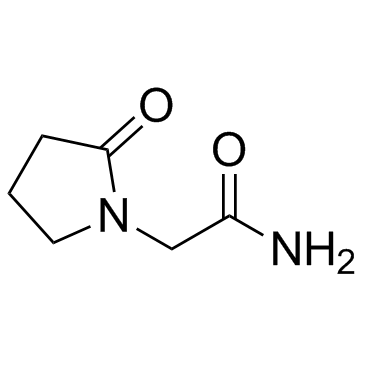
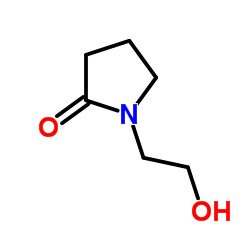 CAS#:3445-11-2
CAS#:3445-11-2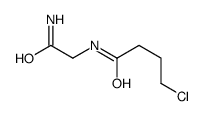 CAS#:64026-51-3
CAS#:64026-51-3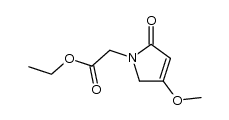 CAS#:110104-61-5
CAS#:110104-61-5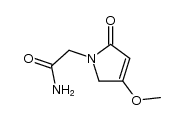 CAS#:114012-62-3
CAS#:114012-62-3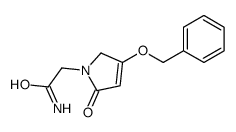 CAS#:113896-94-9
CAS#:113896-94-9 CAS#:61516-73-2
CAS#:61516-73-2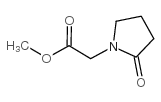 CAS#:59776-88-4
CAS#:59776-88-4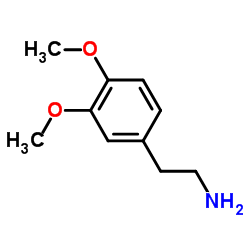 CAS#:120-20-7
CAS#:120-20-7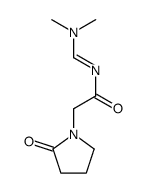 CAS#:92884-66-7
CAS#:92884-66-7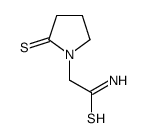 CAS#:117947-07-6
CAS#:117947-07-6![2-[(2E)-2-(nitromethylidene)pyrrolidin-1-yl]acetonitrile structure](https://image.chemsrc.com/caspic/490/91417-82-2.png) CAS#:91417-82-2
CAS#:91417-82-2 CAS#:91417-88-8
CAS#:91417-88-8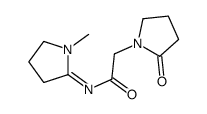 CAS#:92884-68-9
CAS#:92884-68-9 CAS#:57275-83-9
CAS#:57275-83-9
